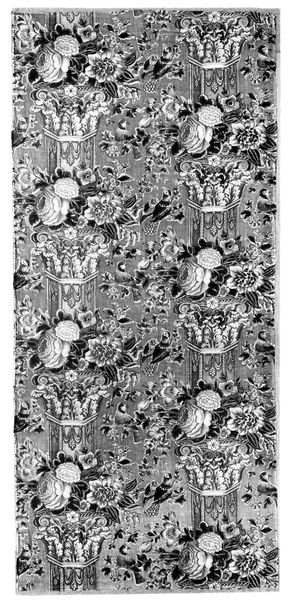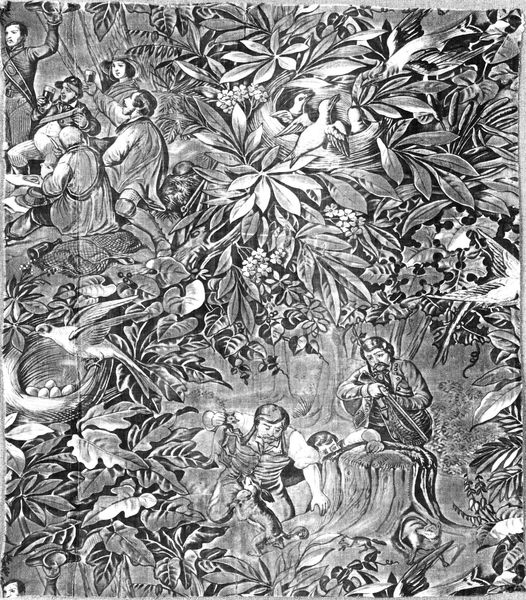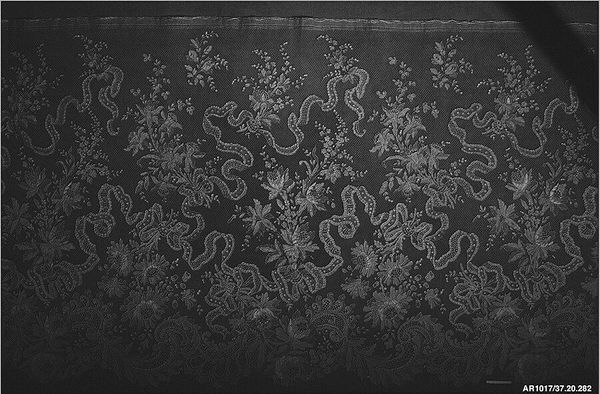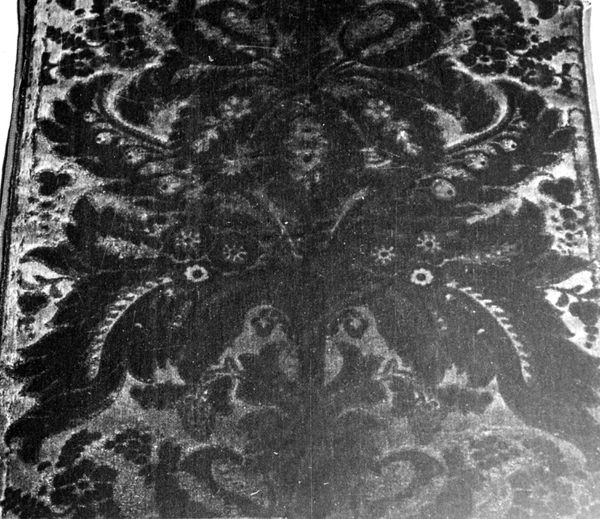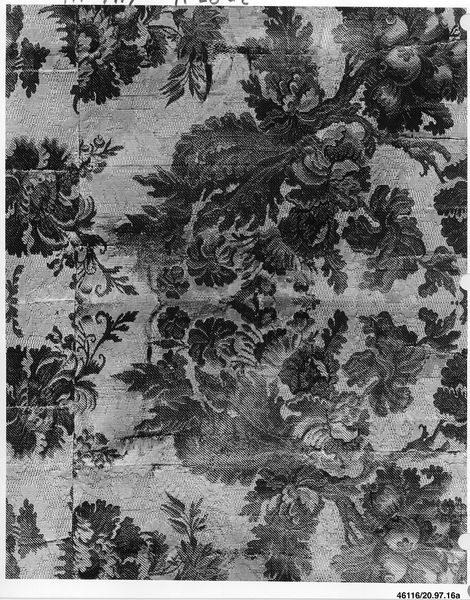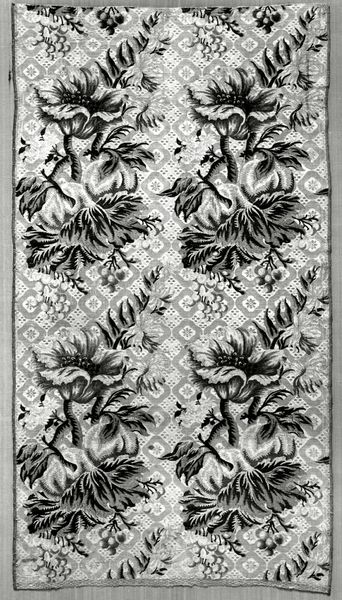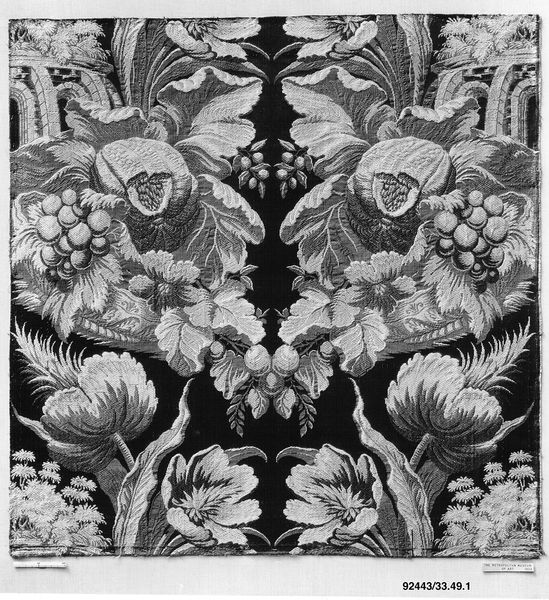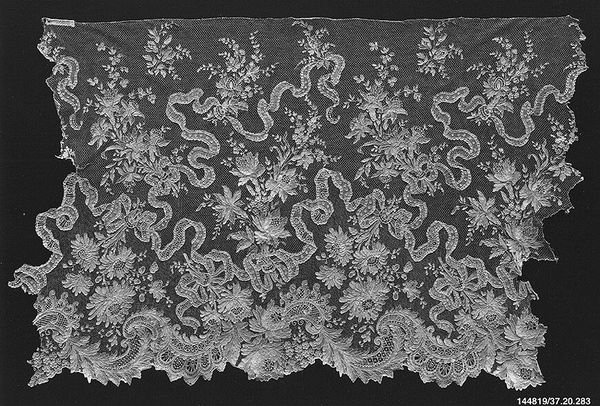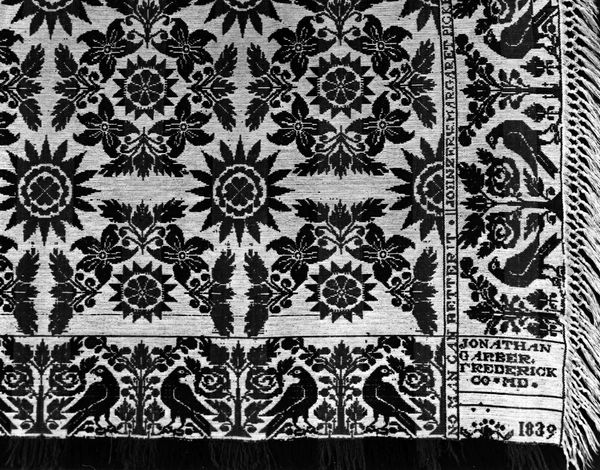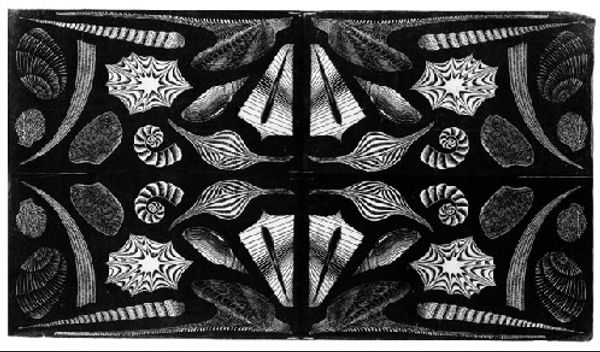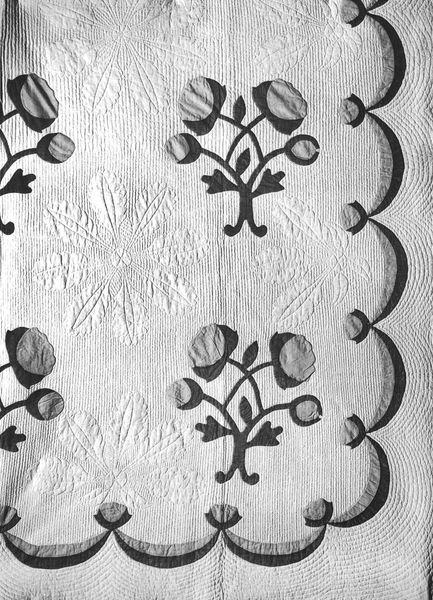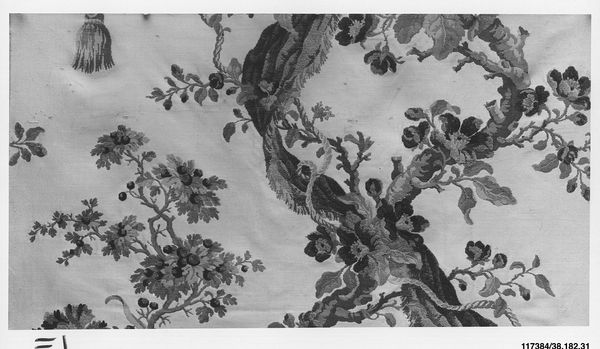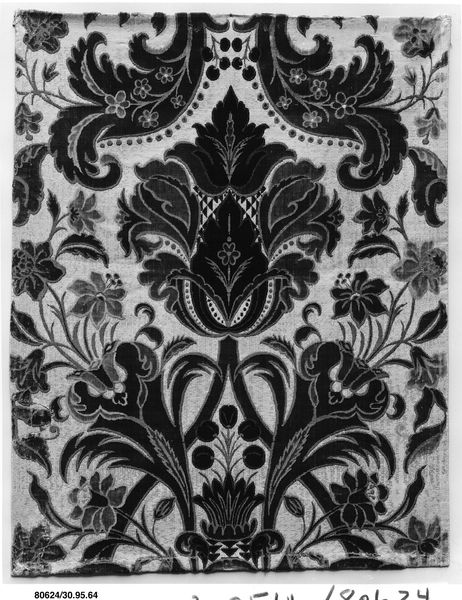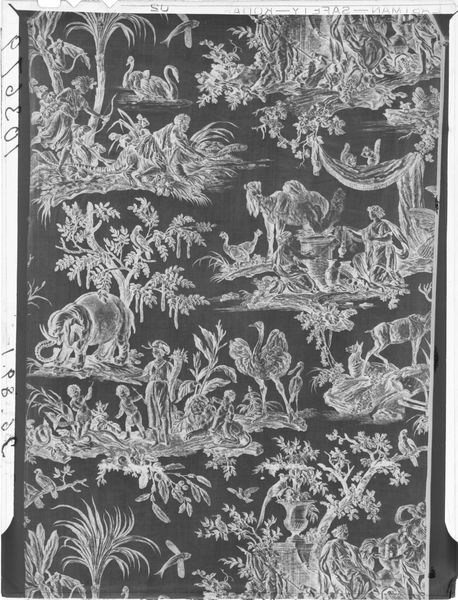
print, textile
#
natural stone pattern
#
naturalistic pattern
# print
#
detailed texture
#
textile
#
organic pattern
#
intricate pattern
#
natural texture
#
scratchy texture
#
pattern in nature
#
organic texture
#
intricate and detailed
Dimensions: a: 33 × 60.3 cm (13 × 23 3/4 in.) b: 63.5 × 98.4 cm (25 × 38 3/4 in.)
Copyright: Public Domain
Editor: Here we have "Panel (Furnishing Fabric)" from around 1815, by Bannister Hall. It's a printed textile, and it strikes me as incredibly detailed. The repetition of the birds and trees creates a calming, almost wallpaper-like effect. What can you tell me about this piece? Curator: It's a fascinating object when you consider the historical context. Textiles like this were mass-produced using technologies rapidly advancing at the time due to the Industrial Revolution, democratizing access to luxury goods, although we should remember those goods were still largely for the rising middle class. The imagery itself is rooted in the Romantic era's fascination with nature and idyllic scenes, but how do you think it might have functioned within a domestic interior? Editor: I hadn’t considered it that way. I suppose having this kind of elaborate natural scene would allow someone to feel connected to nature even indoors. Was it common to see such complex designs in textiles back then? Curator: Absolutely. There was a growing consumer culture. Textile mills produced these complex designs at affordable prices for a wider audience, although as mentioned, it speaks to social class. Pattern books circulated among designers, allowing for stylistic consistency that spoke to broader notions of good taste and what constituted "home." How does understanding that change your initial view of the piece? Editor: It makes me wonder about the cultural values reflected in these design choices, particularly the way nature is portrayed. Curator: Precisely. This "nature" is curated, controlled, and consumed. The print showcases technological advancement and access, ultimately shaping perceptions of landscape and domestic life. Editor: That’s a much more nuanced view than I had at first! It's interesting how something as seemingly simple as a repeating pattern on fabric can reveal so much about its time. Curator: Exactly. Analyzing the public role of such art illuminates how even decorative arts actively participate in societal narratives.
Comments
No comments
Be the first to comment and join the conversation on the ultimate creative platform.
